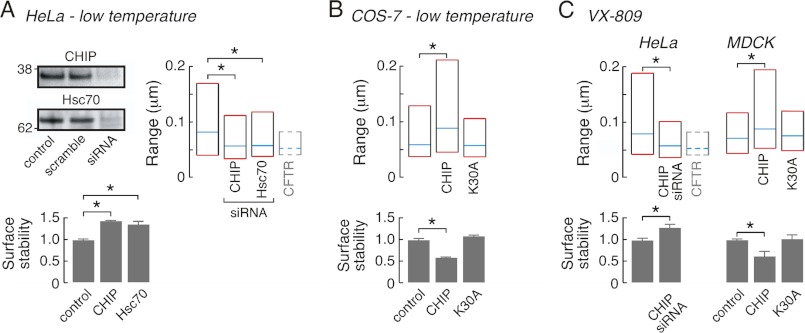FIGURE 4.
The peripheral protein quality control (PPQC) system alters rΔF508CFTR diffusion. A, effects of siRNA-mediated knockdown of CHIP or Hsc70 (left, top) on rΔF508CFTR37 surface levels (left, bottom, values >1 represent stabilization of rΔF508CFTR37 relative to control conditions) and diffusive range (right) in low temperature corrected HeLa cells. For reference, median and interquartile values for wtCFTR diffusive range are shown by dashed lines (bar 4, right). B, transient co-expression of ΔF508CFTR with CHIP but not CHIP-K30A alters rΔF508CFTR37 diffusive range (top) and surface levels (bottom) in low temperature corrected COS-7 cells. C, siRNA-mediated CHIP knockdown in HeLa cells (left) and CHIP expression in MDCK cells (right) alter rΔF508CFTR diffusion (top) and surface levels (bottom) in VX-809-treated cells. For reference, median and interquartile values for wtCFTR diffusive range in HeLa cells are shown by dashed lines (bar 3, left). Statistical difference is denoted (*); for SPT data p < 0.001 and for surface stability data p < 0.05. SPT data were derived from 276–316 trajectories for low temperature corrected Hela cells, from 124–255 trajectories for COS-7 cells, from 160 and 226 trajectories for VX-809-treated Hela cells and from 162–298 trajectories for MDCK cells. Data for CFTR surface stability are mean ± S.E. for 3–8 independent experiments.

